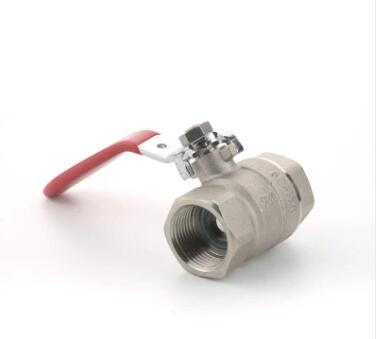Material Matters: The Impact of Material Choice on Ball Valve Performance
2023-12-02
Introduction:
Within the intricate machinery of fluid control systems, ball valves play a pivotal role in regulating the flow of liquids or gases. The performance of a ball valve is intricately tied to the materials used in its construction. The selection of materials determines the valve's durability, resistance to corrosion, temperature compatibility, and suitability for specific applications. In this exploration, we'll unravel the significant influence that material choice exerts on the performance of a ball valve.
1. Corrosion Resistance: A Shield Against Deterioration
One of the primary considerations in selecting materials for ball valves is corrosion resistance. Different materials exhibit varying levels of resistance to corrosion from chemicals, saltwater, or abrasive substances. Stainless steel, for instance, is renowned for its exceptional corrosion resistance, making it an ideal choice for applications in corrosive environments. The right material acts as a protective shield, ensuring the ball valve's longevity and reliability.
2. Temperature Compatibility: Standing the Heat
Materials must withstand the temperature extremes to which they may be exposed in different applications. High temperatures can lead to thermal expansion and degradation of certain materials. Alloy steels and materials like CPVC are chosen for their elevated temperature resistance, ensuring that ball valves can perform seamlessly in applications involving hot water, industrial processes, or steam.
3. Chemical Compatibility: Resisting the Impact of Substances
In industries where ball valves come into contact with various chemicals, the choice of materials becomes critical. PVC and CPVC ball valves are preferred for their chemical resistance, protecting the valve against degradation and maintaining its structural integrity when exposed to a range of substances. The wrong material choice could result in deterioration, leakage, or even failure when subjected to incompatible chemicals.
4. Strength and Durability: Withstanding the Test of Time
The mechanical strength and durability of a ball valve are directly influenced by the materials used in its construction. For applications in heavy-duty industrial environments, where wear and tear are prevalent, materials like carbon steel and alloy steels are chosen for their robust strength. This ensures that the ball valve can withstand the rigors of frequent operation and maintain its performance over an extended lifespan.
5. Weight and Portability: Balancing Practicality
In applications where weight is a crucial factor, such as in aerospace or marine settings, the choice of lightweight materials becomes essential. PVC and certain polymer-based materials provide a balance between strength and weight, making them suitable for applications where portability and ease of handling are priorities.
6. Sealing and Tightness: Preventing Leakage
The choice of materials significantly influences the effectiveness of the sealing mechanism in a ball valve. Materials with low-friction surfaces and excellent wear resistance, such as PTFE (polytetrafluoroethylene) for valve seats, contribute to tight sealing and prevent leakage. The right material ensures the integrity of the sealing system, maintaining the efficiency of the valve over time.
Conclusion: The Symphony of Materials in Performance
In the orchestration of fluid control systems, the choice of materials in ball valve construction plays a leading role in determining performance. From corrosion resistance to temperature compatibility and from strength to sealing effectiveness, each material contributes a specific note to the symphony of a well-engineered ball valve. Engineers and manufacturers carefully consider the demands of the application to select materials that harmonize with the operational requirements, ensuring that ball valves perform optimally and reliably in diverse industrial and commercial settings.



